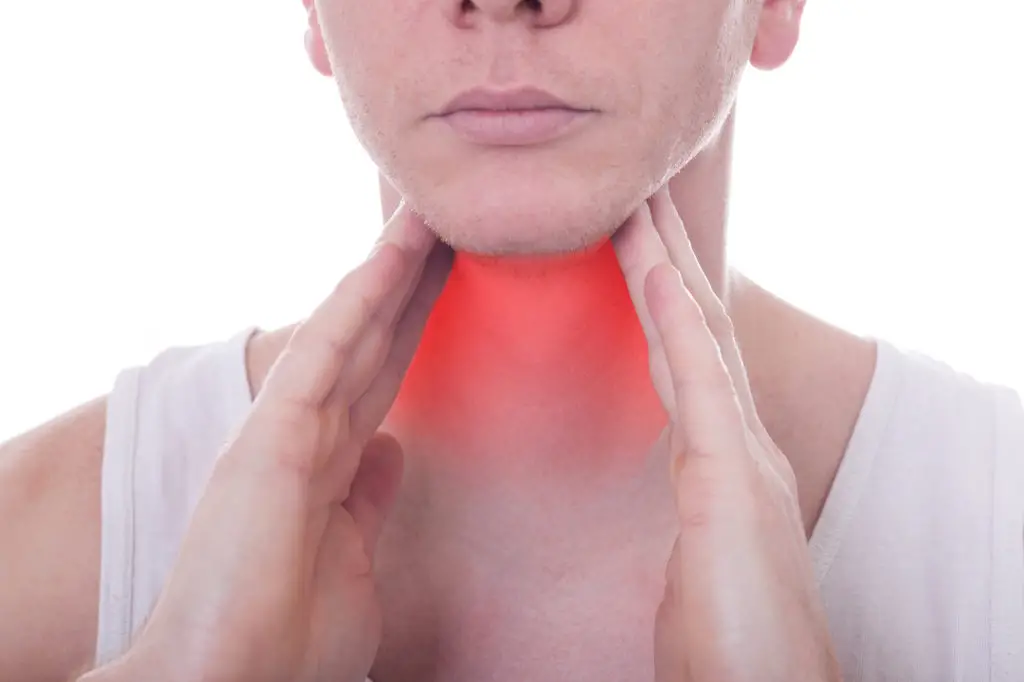Tonsil stones (tonsilloliths) form when debris like food, mucus, or bacteria becomes stuck in the tonsils’ wrinkles (crypts). Over time, these particles begin to calcify and form tonsil stones. Small tonsil stones usually cause no symptoms other than bad breath, but if these hard, calcified deposits are recurrent and large, it can lead to pain, discomfort, and other issues, including, tonsillitis, infection, abscesses.
are recurrent and large, it can lead to pain, discomfort, and other issues, including, tonsillitis, infection, abscesses.
Chronic tonsil stones result from tonsillitis, cryptic tonsils, allergies, or poor oral hygiene. To prevent stones, practice good oral hygiene, consider dietary restrictions, gargle with solutions that kill bad bacteria, and stay hydrated. Seek medical attention for severe symptoms. Treatment options include antibiotics, cryptolysis, surgical removal, or even tonsillectomy.
In this article, let’s cover the causes and symptoms of tonsil stones and how to prevent them. We’ll also talk about home remedies, possible medical treatment for tonsilloliths, and when it’s time to see a doctor. Read on to learn more.
Causes of Recurrent Tonsil Stones
Recurrent tonsil stones may lead to pain, discomfort, embarrassment, and reduced quality of life due to halitosis. Knowing why you keep getting tonsil stones may give some clues in prevention, which will be different for everyone. In this section, we’ll discuss some common causes of recurrent tonsilloliths.
Improper Oral Hygiene
Improper oral hygiene is one of the main causes of recurrent tonsil stones. When you eat, food, bacteria and other debris find their way to the tonsillar crypts. Please note, however, that poor oral hygiene is not always due to a lack of brushing. Even people who brush, floss, and rinse meticulously may end up with tonsil stones. The best oral hygiene for tonsil stones is to regularly flush the tonsils with a low-PSI water flosser.
Long-Term Tonsillitis
Long-term tonsillitis can lead to scarring on the tonsils. This makes people more susceptible to tonsil stones, as the former infection and scar tissue can leave holes . These holes create additional areas for debris, food, and bacteria to become lodged, which in turn, can result in an increase in tonsil stones.
. These holes create additional areas for debris, food, and bacteria to become lodged, which in turn, can result in an increase in tonsil stones.
Cryptic Tonsils
All tonsils have wrinkles and folds, called tonsillar crypts. Some people have higher numbers of these crypts than others, known as “cryptic tonsils.” If you have cryptic tonsils , you have more spaces in your mouth for food and bacteria to settle, leading to calcified deposits.
, you have more spaces in your mouth for food and bacteria to settle, leading to calcified deposits.
Allergies
Tonsil stones are often the result of allergies during the spring and summer months. Tonsils play a key role in fighting infection, because they also function as part of your immune system. During an allergic reaction, whether due to pollen or other factors, the inflammation associated may cause your tonsils to swell which makes it easier to get particles trapped within the crypts.
Dry Mouth
Dry mouth is one of the most common ways for food particles and debris to get stuck within the tonsils, as well as create an environment for anaerobic bacteria to flourish. A lack of hydration, Coffee, alcohol, and even the type of mouthwash you use can all contribute to a dry mouth.
Symptoms of Tonsil Stones

Small tonsil stones do not usually cause any severe symptoms other than bad breath. Large tonsilloliths, however, may cause symptoms but may not be noticed without imaging, such as x-rays or CT scans.
Some common symptoms of tonsil stones include:
- Halitosis (bad breath) – A study conducted by Clinical and Experimental Otorhinolaryngology reported that the presence of tonsilloliths in patients results in unusually high concentrations of volatile sulfur compounds
 in their breath. Volatile sulfur compounds are responsible for intra-oral halitosis.
in their breath. Volatile sulfur compounds are responsible for intra-oral halitosis. - Sore throat – Tonsilloliths may be up to half a centimeter (0.2 inches). Large stones may lead to pain and discomfort. Patients may experience tonsil stones and tonsillitis simultaneously, which increases the likelihood of pain.
- Trouble swallowing – The location and size of the tonsil stone may make it difficult to swallow food. This could be due to tonsil swelling and may also lead to globus pharyngis (the sensation of having something lodged in the throat). Globus pharyngis may cause coughing or trigger the gag reflex.
- White or yellow spots in the back of the throat – In some cases, patients can see the stones in the back of their throat. Tonsilloliths appear as white or yellow solid lumps on the tonsils. These stones may dislodge, leaving foul-smelling stones in the mouth.
- Ear Pain – Interestingly, tonsil stones may cause ear pain. The ears, nose, and throat are all connected and share nerve pathways. This can cause tonsil stone sufferers to feel pain in their ears.
Treating Tonsil Stones
Most minor tonsil stones do not require treatment, especially if they’re not causing symptoms. Over time, the tonsilloliths may dislodge or dissolve on their own without treatment. However, large, untreated tonsil stones may last for years, especially if they’re deep in the throat. This can lead to further complications, including infection.
If recurrent tonsil stones are causing trouble, there are treatments available, which include:
- Antibiotics – Antibiotics may reduce infection and inflammation in the tonsils caused by tonsillitis. While it will not completely eliminate tonsil stones, reducing tonsillitis may reduce the likelihood of tonsil stone formation.
- Cryptolysis – Since tonsil stones form in the fissures and crevices of the tonsils, cryptolysis scars the tonsils to smooth out some of those crypts. Once a surgeon eliminates the crypts, tonsillolith formation is much less likely.
- Surgical Removal – Abnormally large tonsil stones that cause extreme pain, discomfort, or other issues may need surgical removal. A doctor will numb the throat and manually remove the stones during an outpatient visit.
- Tonsillectomy – If all other measures fail and tonsil stones continue to cause problems, a doctor may recommend a tonsillectomy to eliminate the problem. Check out my article on why a tonsillectomy may not be recommended.
Home Remedies for Tonsil Stones

For small tonsil stones that cause minor symptoms, most people will be able to find relief at home. My blog covers these remedies in detail, and they include:
- Gargling – For minor tonsilloliths, gargling with a home made solution may be enough to dislodge the stones. If these don’t work, try food-grade hydrogen peroxide. Also, vinegar is acidic, which may aid in dissolving small stones.
- At-home removal – If the tonsil stones are visible, you may be able to remove them at home by gently scraping or pressing on the side of the tonsil near the stone with a cotton swab. I recommend using tonsil stone removal tools and a water flosser for flushing them out. Gargle with warm salt water post-removal.
- Dietary changes. Certain foods are much more likely to aid in the development of tonsil stones, so I recommend avoiding these. In addition, adding foods containing probiotics to your diet may help in fighting off the bacteria that cause bad breath.
If at-home remedies do not work or the stone is exceptionally large and difficult to remove, consult a doctor.
Preventing Tonsil Stones
There are ways to prevent tonsil stones, but these are not long-term solutions for recurrent tonsilloliths. The only way to permanently eliminate recurrent tonsilloliths is to have the tonsils smoothed out with cryptolysis, or removed via a tonsillectomy.
However, there are other prevention methods that you may want to try. Those methods include:
- Good oral hygiene – Brush, floss, and rinse the mouth with an oxygenating mouthwash at least twice a day. Use a water flosser for flushing out debris within the tonsils.
- Rinse and gargle after eating – If you’re prone to tonsil stones, you should rinse and gargle warm salt water after every meal to prevent bacteria and debris from settling in the tonsillar crypts.
- Stay hydrated – Saliva is naturally more viscous than water, but you can reduce the viscosity by drinking plenty of water. Less viscous saliva may prevent food from getting stuck in the throat.
- Avoid certain foods – Foods like popcorn, seeds, and nuts often leave small particles behind in the mouth. These food particles may end up stuck in the crypts of the tonsils, forming tonsil stones.
When To See a Doctor for Tonsil Stones

As mentioned throughout this article, small tonsil stones are not usually a cause for concern. There are, however, some instances when it’s important to seek medical attention for tonsilloliths.
Individuals with any of the following symptoms should set up an appointment with their primary care provider:
- Stones cause severe pain or discomfort
- Home remedies do not work, or the stone is difficult to remove
- Swelling of tonsils, or one tonsil is bigger than the other

- Saliva shows traces of blood
- Severe neck pain or swelling in the neck
- Tonsil stones continue to grow or increase in number
Anyone experiencing difficulty breathing or swallowing should visit their local emergency room immediately.
Final Thoughts
Recurring tonsil stones can wreak havoc on a person’s life and daily routine. Understanding the causes of recurrent tonsilloliths may help an individual prevent them. Medical treatments and home remedies may also reduce the pain and discomfort associated with tonsil stones.
Remember to practice good oral hygiene, gargle with warm salt water after eating, stay hydrated, and avoid allowing food particles to sit in the mouth. If symptoms persist, reach out to your doctor.
Check out the rest of my blog for tips and recipes on how to manage your tonsil stones so you can breathe easy.


